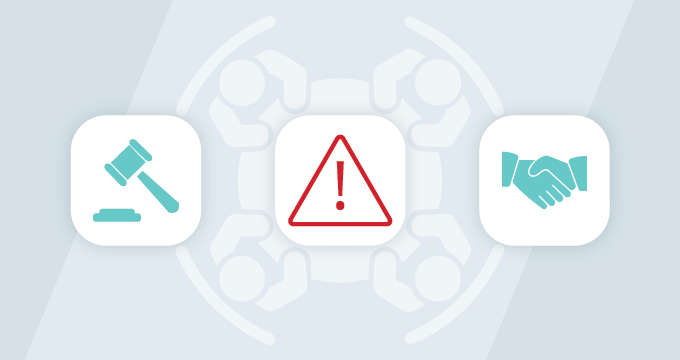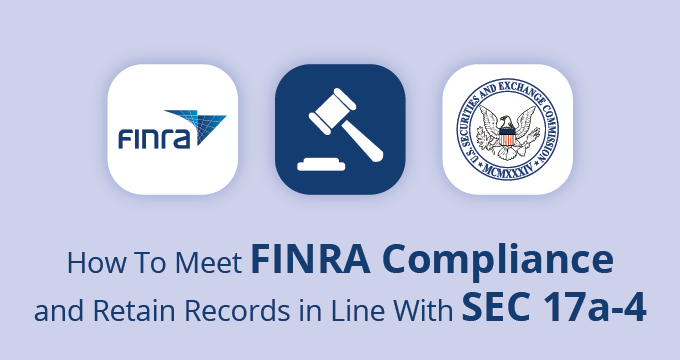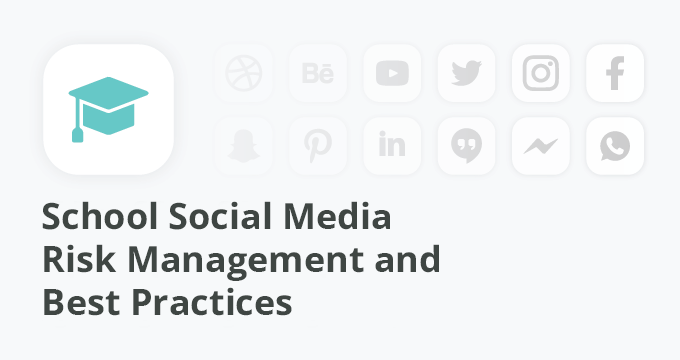The Federal Rules of Civil Procedure (FRCP) serve as the backbone of American civil litigation, governing court procedure for civil cases.
Among these rules, FRCP 26(f), commonly known as the “meet and confer” rule, stands out as a critical early step in the litigation process.
For IT Directors, Technology Managers, CIOs, CTOs, Compliance Officers, and Managers in regulated industries, understanding and effectively navigating Rule 26(f) is essential.
The meet and confer conference not only sets the stage for discovery, but also offers a unique opportunity to influence the scope and direction of information exchange in the case.
Understanding Rule 26(f): The Basics
Rule 26(f) of the Federal Rules of Civil Procedure mandates that parties involved in litigation meet as soon as practicable — at least 21 days before a scheduling conference is to be held or a scheduling order is due under Rule 16(b).
The purpose of this rule is twofold. First, it encourages parties to engage in open communication early in the litigation process. This early interaction aims to promote a more efficient, cooperative discovery process, reducing the likelihood of disputes and unnecessary delays. Second, Rule 26(f) helps in identifying and narrowing the key issues for discovery, leading to a more focused and cost-effective approach.
Whether dealing with cases in healthcare, financial services, education, or government, the meet and confer conference is an opportunity to set clear boundaries and expectations for the discovery process, ensuring compliance and efficiency are maintained throughout.
Here are a few examples illustrating the context of the meet and confer process:
- Start of an employment lawsuit
- Environmental class action
- Healthcare compliance cases
- Complex commercial litigation
- Federal antitrust case
- Intellectual property disputes
Preparing for the Meet and Confer Conference
For professionals in IT, legal, and compliance roles, this preparation involves a series of strategic steps:
- Review the case in detail — Before entering the conference, familiarize yourself with the legal claims and defenses, key facts, and any relevant documents or data.
- Identify key issues and concerns — Make a list of potential issues or concerns that might arise during discovery. This could include the volume of data, types of electronic information, potential challenges with data retrieval, privacy concerns, and compliance requirements specific to your industry.
- Consider eDiscovery requirements — Assess your ediscovery needs, including types of electronic data, preferred formats for data exchange, and any tools or technologies that might be necessary for data processing and review.
- Formulate a proposed discovery plan — This plan should include proposed timelines, the scope of discovery, any phased approaches to discovery, and considerations for handling ESI. Be prepared to negotiate and modify this plan based on the discussion during the conference.
- Prepare technological and legal resources — Ensure that you have access to the necessary technological and legal resources. This might include consulting with IT experts, ediscovery specialists, or legal advisors who can provide insights related to the case.
This preparation not only sets the stage for a productive meeting, but also demonstrates professionalism and commitment to a cooperative legal process.
Key Topics to Address During the Conference
During the meet and confer conference, several critical topics should be addressed to ensure a comprehensive and efficient discovery process. For professionals in regulated industries, it’s crucial to emphasize the role of data archiving in this discussion.
Here are the key areas to focus on:
- Discussion of discovery scope and limits — Begin with determining the scope of discovery. This involves what types of information are relevant and reasonable to request. Address any limitations that should be applied to avoid overly broad or burdensome discovery requests.
- Timing and phases of discovery — Agree on a timeline for discovery, including any phases. Phased discovery can be especially useful in complex cases, allowing parties to focus on the most critical issues first.
- Ediscovery considerations — Ediscovery will likely be a substantial part of the discussion. Topics should include types of electronic data (emails, documents, databases), data formats, and the use of specific eDiscovery tools.
- Data preservation obligations — This includes determining what data needs to be preserved, for how long, and the methods to be used. Emphasize the importance of data archiving. Ensure that the methods agreed upon comply with relevant industry regulations (like HIPAA in healthcare or FINRA in financial services).
- Handling of sensitive or confidential information — Address the handling of confidential or sensitive information. This may involve discussing protective orders, redaction processes, or agreed-upon methods for securely exchanging sensitive data.
- Potential for settlement or Alternative Dispute Resolution (ADR) — Explore the potential for settlement or ADR mechanisms. An early discussion about settlement can save time and resources for all parties involved.
The emphasis on data archiving and compliance is particularly crucial for regulated industries, ensuring that the discovery process aligns with regulatory requirements and best practices for data management.
Post-Conference Steps
Once the meet and confer conference under FRCP 26(f) concludes, take steps to ensure the effective implementation of the agreed-upon discovery plan.
Here are five critical steps to follow:
- Finalize and submit the discovery plan — This plan should clearly outline the scope, timelines, data management strategies, and any special considerations for ediscovery and sensitive information. Once finalized, submit the plan to the court for approval to formalize the agreements.
- Initiate the discovery process — Begin implementing the discovery plan as soon as it’s approved. This includes starting data preservation, collecting and reviewing documents, and setting up ediscovery tools. Use data archiving solutions effectively to streamline the retrieval and management of electronic data, ensuring compliance with legal requirements.
- Monitor compliance — Regularly monitor the implementation of the discovery plan to ensure that all parties adhere to the agreed-upon terms. Be prepared to adjust the plan in response to new developments or challenges in the case.
- Resolve disputes and ensure collaboration — Maintain open and collaborative communication with all parties involved. Should disputes or compliance issues arise, address them promptly through negotiation or, if necessary, seek the court’s guidance.
- Document the process and meet deadlines — Keep thorough records of the discovery process, including all communications and steps taken. This documentation is vital for tracking progress, and resolving disputes. Ensure that all actions, including document productions and reviews, are completed on time.
By following these post-conference steps, parties can effectively execute the discovery plan, ensuring a smooth, compliant, and efficient discovery process.
Meet and Confer Checklist
Step 1: Know your case
- Understanding factual background, legal issues, and potential data sources.
- Determine who has access to discoverable information.
- Review any data retention policy that might be in place.
Step 2: Know your data
- Assess the types of electronically stored information (ESI) relevant to the case.
- Discover where digital evidence is located (emails, hard drives, cloud storage, financial software, social media, websites, and/or mobile devices).
- Understand the IT infrastructure of each party.
Step 3: Preservation
- Develop strategies for preserving relevant ESI, including implementing legal holds.
- Draft a preservation request.
Step 4: Ediscovery liaisons
- Assign ediscovery liaisons who will handle ediscovery issues and communications.
Step 5: Proportionality
- Assess the relevance and timeframe of the requested data.
- Determine the cost and discuss how it will be shared between the parties.
Step 6: ESI protocol
- Develop a protocol for handling ESI.
- Determine formats for production (spreadsheets, files, images…).
- Compile a list of keyword search terms.
- Define methods of collection.
Step 7: Privilege
- Identify privileged material such as specific communication, documents, trade secrets.
- Create a privilege log agreeing on the format and level of detail.
Step 8: Phasing
- Determine priority areas that should be addressed first in the discovery process.
- Propose a discovery schedule in stages.
Step 9: ADR/settlement
- Evaluate settlement potential.
- Determine (ADR) methods like mediation, arbitration, or early neutral evaluation.
Step 10: Follow Up
- Plan for follow-up meetings or communications to address any ongoing or unresolved issues.
Step 11: Meet and confer letter
- Draft a meet and confer letter to summarize the agreements and understandings reached during the conference.
Summary
The meet and confer process under FRCP 26(f) offers an opportunity for parties to set a cooperative and strategic tone for the discovery phase.
IT Directors, Technology Managers, CIOs, CTOs, Compliance Officers, and Managers can leverage the meet and confer process to streamline discovery, minimize disputes, and ensure a more efficient and cost-effective litigation process.
Stay compliant with all data retention regulations with Jatheon’s archiving solution allowing you to archive all communication, perform ediscovery, and protect your data.
FAQ
What is the main purpose of the meet and confer conference under FRCP 26(f)?
The primary purpose of the meet and confer conference is to encourage parties to discuss the discovery process early in litigation, focusing on setting a cooperative tone, determining the scope and timing of discovery, addressing issues related to ediscovery, and developing a discovery plan that aligns with both parties’ needs and legal requirements.
How crucial is ediscovery in the meet and confer process?
Discussing ediscovery allows parties to agree on formats for electronic data exchange, use of specific ediscovery tools and strategies for managing large volumes of electronic data, which is particularly important in regulated industries.
Can the discovery plan agreed upon during the meet and confer be modified later?
Yes, the discovery plan can be modified later if both parties agree or if new developments in the case require changes. Flexibility is key, and parties should be prepared to adjust the plan to accommodate unforeseen challenges or changes in the case’s direction.
What happens if parties cannot agree during the meet and confer?
If parties cannot reach an agreement during the meet and confer, they may seek the court’s intervention. The court may provide guidance, suggest alternatives, or, in some cases, make binding decisions regarding the discovery process.
How important is data archiving in the context of the meet and confer conference?
Data archiving is extremely important in the context of the meet and confer conference, especially for regulated industries. Effective data archiving practices facilitate efficient retrieval and management of electronic data, ensure compliance with legal requirements, and streamline the ediscovery process.
Read Next:Navigating Document Retention Policy and Managing Requests for Production |








